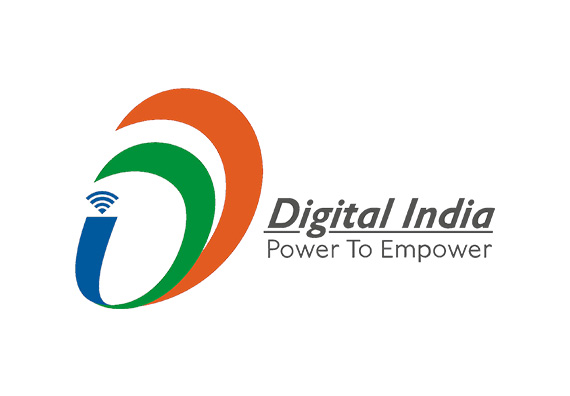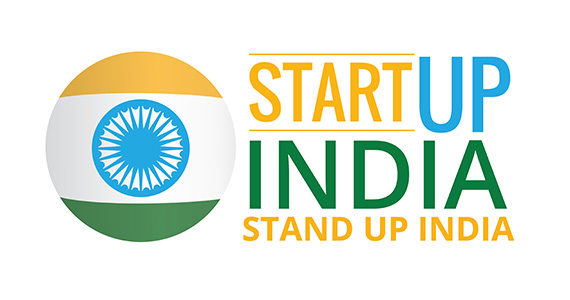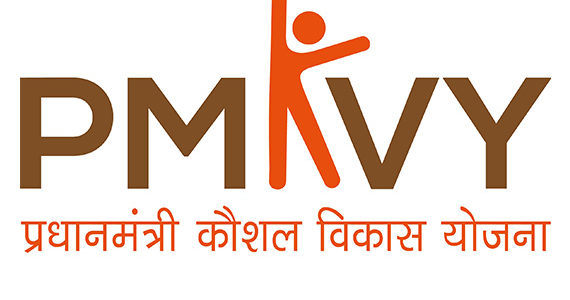
Digital India
The Digital India programme is a flagship programme of the Government of India with a vision to transform India into a digitally empowered society and knowledge economy.
E-governance initiatives in India took a broader dimension in the mid 1990s for wider sectoral applications with emphasis on citizen-centric services. The major ICT initiatives of the Government included, inter alia, some major projects such as railway computerization, land record computerization, etc. which focused mainly on the development of information systems. Later on, many states started ambitious individual e-governance projects aimed at providing electronic services to citizens.
Though these e-governance projects were citizen-centric, they could make less than the desired impact due to their limited features. The isolated and less interactive systems revealed major gaps that were thwarting the successful adoption of e-governance along the entire spectrum of governance. They clearly pointed towards the need for a more comprehensive planning and implementation for the infrastructure required to be put in place, interoperability issues to be addressed, etc. to establish a more connected government.
The Digital India programme is centred on three key vision areas:
Digital Infrastructure as a Utility to Every Citizen
- Availability of high speed internet as a core utility for delivery of services to citizens
- Cradle to grave digital identity that is unique, lifelong, online and authenticable to every citizen
- Mobile phone & bank account enabling citizen participation in digital & financial space
- Easy access to a Common Service Centre
- Shareable private space on a public cloud
- Safe and secure cyber-space
Governance & Services on Demand
- Seamlessly integrated services across departments or jurisdictions
- Availability of services in real time from online & mobile platforms
- All citizen entitlements to be portable and available on the cloud
- Digitally transformed services for improving ease of doing business
- Making financial transactions electronic & cashless
- Leveraging Geospatial Information Systems (GIS) for decision support systems & development
Digital Empowerment of Citizens
- Universal digital literacy
- Universally accessible digital resources
- Availability of digital resources / services in Indian languages
- Collaborative digital platforms for participative governance
- Citizens not required to physically submit Govt. documents / certificates
Approach and Methodology for Digital India Programme are:
- Ministries / Departments / States would fully leverage the Common and Support ICT Infrastructure established by GoI. DeitY would also evolve/ lay down standards and policy guidelines, provide technical and handholding support, undertake capacity building, R&D, etc.
- The existing/ ongoing e-Governance initiatives would be suitably revamped to align them with the principles of Digital India. Scope enhancement, Process Reengineering, use of integrated & interoperable systems and deployment of emerging technologies like cloud & mobile would be undertaken to enhance the delivery of Government services to citizens.
- States would be given flexibility to identify for inclusion additional state-specific projects, which are relevant for their socio-economic needs.
- e-Governance would be promoted through a centralised initiative to the extent necessary, to ensure citizen centric service orientation, interoperability of various e-Governance applications and optimal utilisation of ICT infrastructure/ resources, while adopting a decentralised implementation model.
- Successes would be identified and their replication promoted proactively with the required productization and customisation wherever needed.
- Public Private Partnerships would be preferred wherever feasible to implement e-Governance projects with adequate management and strategic control.
- Adoption of Unique ID would be promoted to facilitate identification, authentication and delivery of benefits.
- Restructuring of NIC would be undertaken to strengthen the IT support to all government departments at Centre and State levels.
- The positions of Chief Information Officers (CIO) would be created in at least 10 key Ministries so that various e-Governance projects could be designed, developed and implemented faster. CIO positions will be at Additional Secretary/Joint Secretary level with over-riding powers on IT in the respective Ministry.
Programme Management Structure for Digital India Programme
The Programme management structure for the Digital India prorgamme as endorsed by the Union Cabinet is as follow:
- For effective management of the Digital India programme, the programme management structure would consists of a Monitoring Committee on Digital India headed by the Prime Minister, a Digital India Advisory Group chaired by the Minister of Communications and IT and an Apex Committee chaired by the Cabinet Secretary. The structure has the needed secretarial/ monitoring/ technical support and appropriate decentralization of power and responsibility to ensure effective execution of the various projects/ components by the implementing departments/ teams.
- Key components of the Programme Management structure would be as follows:
- Cabinet Committee on Economic Affairs (CCEA) for programme level policy decisions.
- A Monitoring Committee on Digital India under the Chairpersonship of Prime Minister which will be constituted with representation drawn from relevant Ministries/ Departments to provide leadership, prescribe deliverables and milestones, and monitor periodically the implementation of the Digital India Programme.
- A Digital India Advisory Group headed by the Minister of Communications and IT to solicit views of external stakeholders and to provide inputs to the Monitoring Committee on Digital India, advise the Government on policy issues and strategic interventions necessary for accelerating the implementation of the Digital India Programme across Central and State Government Ministries/Departments. The composition of the Advisory Group would include representation from the Planning Commission and 8 to 9 representatives from States/UTs and other Line Ministries/Departments on a rotational basis.
- An Apex Committee headed by the Cabinet Secretary would be overseeing the programme and providing policy and strategic directions for its implementation and resolving inter-ministerial issues. In addition it would harmonize and integrate diverse initiatives and aspects related to integration of services, end to end process re-engineering and service levels of MMPs and other initiatives under the Digital India Programme, wherever required.
- Expenditure Finance Committee (EFC)/Committee on Non Plan Expenditure (CNE) to financially appraise/ approve projects as per existing delegation of financial powers. The EFC/ CNE headed by Secretary Expenditure would also be recommending to the CCEA the manner in which MMPs/ eGovernance initiatives are to be implemented, as well as the financial terms of participation for States. A representative of the Planning Commission would also be included in both the EFC and CNE.
- A Council of Mission Leaders on Digital India headed by Secretary, DeitY would be established as a platform to share the best practices in various existing and new eGov initiatives under Digital India and also to sensitize various government departments about ICT projects of DeitY. While the inter-departmental, integration and interoperable issues of integrated projects / eGovernance initiatives would be resolved by the Apex Committee on Digital India headed by Cabinet Secretary, the technical issues of integrated projects would be resolved by the Council of Mission Leaders.
- Further, considering the scope of the Digital India Programme and the need to look at issues such as overall technology architecture, framework, standards, security policy, funding strategy, service delivery mechanism, sharing of common infrastructure etc. at a programme level, it is proposed that the technical appraisal of all Digital India projects be done by DeitY, prior to a project being placed before the EFC/ CNE. This appraisal would cover issues relating to inclusion of adoption of Standards, utilization of Cloud and mobile platforms, consideration of security aspects, etc. The Secretary, DeitY or his representative may also be included as a standing special invitee to all EFC/CNE meetings, which are appraising/approving MMPs. It may be mentioned that the DeitY has already set up a Programme Management Unit, namely National eGovernance Division (NeGD) to provide support to departments in conceptualizing, developing, appraising, implementing and monitoring respective MMPs / eGovernance Initiatives.
- Institutional mechanism of Digital India at State level would be headed by State Committee on Digital India by the Chief Minister. State/UT Apex Committees on Digital India headed by Chief Secretaries would be constituted at State/UT level to allocate required resources, set priority amongst projects and resolve inter-departmental issues at State level.
- For effective monitoring of Digital India, usage of Project Management Information System would be mandatory in each new and existing Mission Mode Projects to capture the real or near real time details about the progress of the project. This tool should be proficient enough to capture the parameters for each stage of project namely, conceptualization and development, implementation and post implementation. The parameters could be decided in consultation with various line Ministries / Departments and DeitY.
- Since the “e-Kranti: National eGovernance Plan 2.0” is already integrated with Digital India Programme, the existing programme management structure established for National eGovernance Plan at both national and state level has also been decided to be integrated appropriately with the programme management structure being envisaged for Digital India Programme at national and State/UT level.



